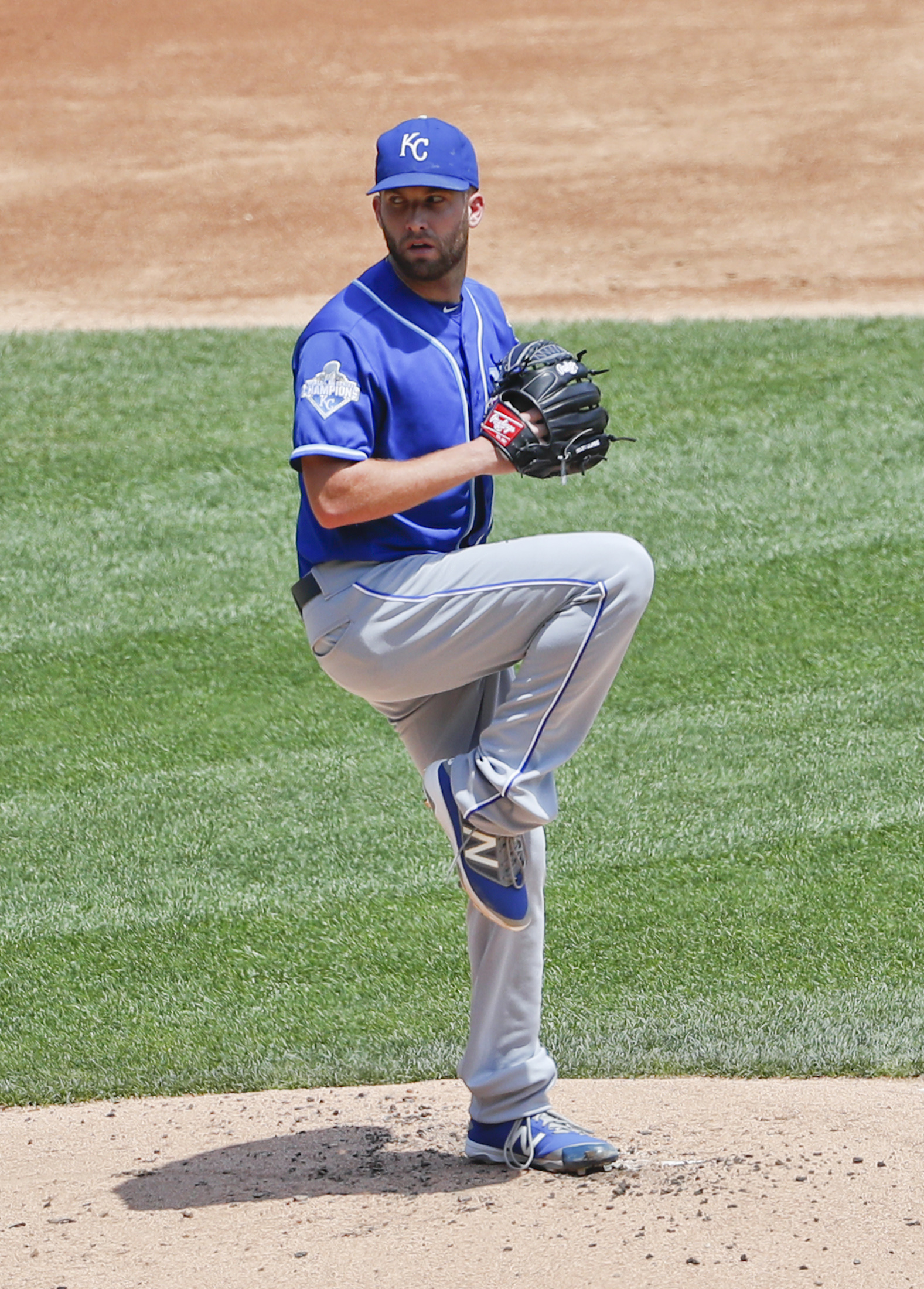The practice of diving one level deeper than a pitcher’s traditional stats (ERA, WHIP, wins, etc.) has been widely accepted throughout fantasy baseball circles in recent years. Metrics such as a pitcher’s strikeouts per nine innings (K/9) and walks per nine (BB/9) have become commonly used when analyzing pitching performance, and rightly so.
![2016-06-22-danny-duffy [image : 86222524]](http://www.gannett-cdn.com/media/2016/06/22/USATODAY/USATODAY/636021815407137427-sw13-fantasy-0622.jpg)
But we can (and should) go even deeper. One place to look for underlying changes in a pitcher’s skill set is velocity. Fastball velocity is at an all-time high across MLB this season (92.1 mph), and while it’s easy to focus on high-octane arms that routinely hit the mid-90s, it’s a much more worthwhile exercise to look at changes in a pitcher’s velocity from year to year.
At BaseballHQ.com, we’re much more interested in a starter who has ramped up his velocity from 90 mph to 92 in a season, as this can have considerably more impact on surface numbers than a starter who has stayed flat at 95 mph. On the flip side, velocity drops can be particularly worrisome, as this often drives ineffectiveness or, worse, a hidden injury.
With that in mind, let’s look at pitchers who have shown notable gains or losses in fastball velocity in 2016, and, more important, how these changes affect their outlooks during the second half.
On the rise
Danny Duffy of the Kansas City Royals has been one of the biggest surprises of the 2016 season with an excellent 3.17 ERA and 1.07 WHIP through 54 innings. Duffy’s average fastball velocity has exploded from 93 mph in the last two seasons to nearly 96 mph in 2016 — and it hasn’t dropped since he moved from Kansas City’s bullpen to the rotation in mid-May.
Duffy’s velocity gains have delivered a significant boost to his strikeouts this season — an elite 10.5 K/9 in 2016 dwarfs his 7.5 career mark.
Even better, Duffy’s velocity gains haven’t come at the expense of his pinpoint control (2.0 BB/9). He’s 27 and armed with significantly improved skills, so Duffy’s sub-3.50 ERA looks legit. Expect him to keep it up the rest of the way.
Though his 4.50 ERA might not show it, Matt Shoemaker of the Los Angeles Angels has recovered nicely from a dismal April in which he had more runs allowed (21) than innings pitched (202/3). Shoemaker’s strikeout rate has surged to a career-high 9.4 K/9, thanks in part to an average fastball velocity that has jumped from 90 mph to 92 mph since April. Shoemaker’s strikeout gains and excellent control have combined to form an elite 5.1 strikeout-to-walk ratio (K/BB).
In addition to the gain in velocity, he increasingly has leaned on a split-finger fastball throughout the season, throwing it more than 40% of the time since mid-May. Coincidence? Probably not. With his new approach and improved fastball velocity, Shoemaker looks poised for a breakout performance in the second half.
![BaseballHQ.com [oembed : 86222584] [oembed : 86222584]](/Portals/_default/Skins/PrestoLegacy/CommonCss/images/smartembed.png)
Jon Gray of the Colorado Rockies has been widely regarded as one of the best pitching prospects in baseball, but a 5.53 ERA in his rookie season and a 4.55 mark in 2016 have kept many owners away. But Gray has quietly surged in his sophomore season: his K/9 rate is up to 9.9, his BB/9 is down from 3.1 to 2.6 and his fastball velocity has inched up from 94.4 mph in 2015 to 95.3 this season.
Further fueling Gray’s gains is a 49% ground ball rate that should help limit the damage from Coors Field. After a rough April, Gray has settled down nicely, allowing two earned runs or fewer in all but one start from May 2 through June 18. Despite his home park, Gray remains a long-term growth stock who is ready to pay immediate dividends.
Deep league owners: Adam Morgan’s 6.49 ERA and 1.52 WHIP don’t inspire much optimism at first glance, but a closer look into his 2016 performance for the Philadelphia Phillies unveils a potential buying opportunity. Morgan has shown the largest fastball velocity increase of any pitcher in 2016, going from 89 mph last season to more than 91 mph in 2016. His K/9 bump from 5.2 to 7.7 has followed suit.
With excellent control, Morgan’s 3.5 K/BB and career-high .333 batting average on balls in play hint that better numbers should be on the way. Morgan’s long-term upside is limited, but he has the goods to be a serviceable flier in NL-only leagues.
Going down
Matt Harvey routinely hit 96 mph in 2015 — just one year after Tommy John surgery — but his velocity sits at a career-low 94 mph. While that mark is still well above average, the two-tick drop has played a role in Harvey’s career-low strikeout rate (7.5 K/9) in 2016. Harvey has parlayed the strikeout drop with more walks and fewer ground balls, showing that he’s deserved most of his 4.76 ERA through 14 starts.
Harvey’s track record of better performance suggests it’s far too early to cut bait, but unless he can recover from these early velocity losses, he’ll fail to put up the ace-level numbers that his owners were expecting on draft day.
Jordan Zimmermann signed a five-year, $110 million free agent contract with the Detroit Tigers entering the 2016 season. While things looked great when he gave up two earned runs in five April starts, he has a 5.00 ERA in seven outings since May 1. A big reason for his recent decline has been a soft-tossing 5.7 K/9 rate, down from 8.2 in 2014 and 7.3 in 2015. Zimmermann is missing fewer bats thanks to a velocity dip from 93-94 mph in recent seasons to just under 92 mph in 2016.
Zimmermann’s pinpoint control — 1.8 BB/9 — remains strong and will keep him in games, but reduced velocity in his age-30 season suggests the meager strikeout totals could stick. If that’s the case, expect Zimmermann’s ERA to continue to climb closer to 4.00, and that big contract might soon look like an albatross.
![Brent Hershey answers your fantasy baseball questions -- Wednesday, noon ET [oembed : 86222550] [oembed : 86222550]](/Portals/_default/Skins/PrestoLegacy/CommonCss/images/smartembed.png)
Long known as a pillar of fantasy stability, James Shields of the Chicago White Sox makes our list for all the wrong reasons, as his fastball velocity has declined in each of the past two seasons: 92.4, 91.0 and now 90.2 in 2016.
Shields’ lukewarm heat can be seen in a drop from 9.6 K/9 in 2015 to 7.3 this season, and he’s walking hitters at a career-high rate (2.3 career BB/9; 4.3 in 2016).
His 6.25 ERA and 1.70 WHIP through 14 starts have been ugly, and several key indicators are headed in the wrong direction. He’s 34 and has nearly 2,200 major league innings on his arm. There’s little reason to bet on him turning it around.


